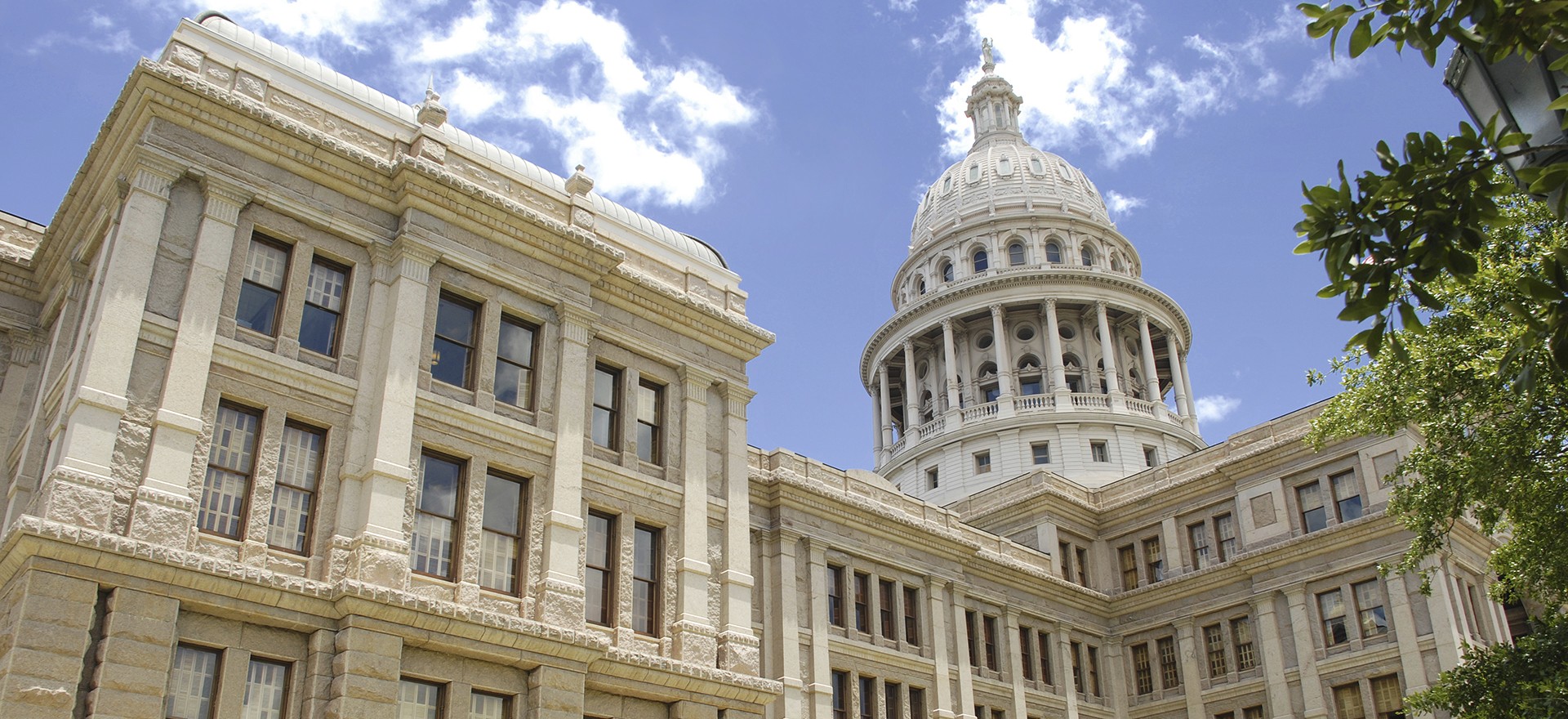House committee discusses teacher pensions, health care

School Finance Retirement | TRS | Social Security
Date Posted: 5/10/2018 | Author: Mark Wiggins
The House Committee on Pensions met Thursday morning in Dallas to discuss items listed under the committee’s interim charges, including the Teacher Retirement System (TRS) of Texas.
The committee met in the chambers of the Dallas City Council, which oversees pensions for the city’s police and firefighters that have come under scrutiny as of late. Dallas Mayor Mike Rawlings was the first witness to testify, thanking the committee for legislation dealing with issues pertaining to Dallas police and firefighter pensions and updating members on changes the city has put in place since the legislation’s passage.
Executive Director Brian Guthrie testified for TRS, laying out the basics of the $152 billion trust fund that serves 1.5 million active and retired members. The fund earned a return of 12.6 percent for fiscal year (FY) 2017, under an assumed rate of return of 8 percent. The fund carries $35.5 billion of unfunded liability and is 80.5 percent funded with an amortization period of 32.2 years, which Guthrie noted will change if the assumed rate of return is lowered. TRS manages two major healthcare programs: TRS-ActiveCare for active teachers and TRS-Care for retirees. Guthrie testified that TRS undertook a study in 2013 looking at the fund’s defined benefit structure, and will be producing an updated study this fall.
Turning to health care, Guthrie described TRS-Care as a “pay as you go plan.” The state’s contribution to the plan is 1.25 percent of active employee payroll, while school districts contribute .75 of active employee payroll and active employees contribute .65 percent of their paycheck. Retirees contribute to the plan through premiums. The plan faced a $1 billion projected budget shortfall heading into the last legislative session, and lawmakers of the 85th Texas Legislature put $700 million into the system in order to keep the fund from folding. While the infusion was able to prevent retirees from losing their health care, it wasn’t enough to avoid increases in costs and reductions in benefits.
Even with the changes, which included increasing premiums, the fund faces a $400-600 shortfall heading into the next biennium and ongoing shortfalls moving forward. Guthrie attributed the increase to legislation accompanying the added funding that directed the agency to ease cost increases. Guthrie indicated the primary problem is with the fundamental design of the funding formula, noting that healthcare costs are increasing far more quickly than revenue received from active employee payroll, which is the basis for the funding formula.
The largest cost increases are associated with plans that include coverage for dependents, and TRS initially offered retirees the option of permanently leaving TRS-Care for an insurance plan on the private market. Chairman Dan Flynn (R-Canton), members of the committee and legislators representing the Dallas/Fort Worth Metroplex pressed Guthrie to find a way to protect benefits, in particular prescription drug costs. Guthrie testified that the agency is studying all possible avenues, but the fund design presents the largest challenge.
Finally, Guthrie explained TRS-ActiveCare as a group insurance program for small to midsize school districts that would be otherwise unable to provide their own insurance programs. The state provides $75 per member, per month through the school finance formulas, districts contribute a minimum of $150 per month, and individual members are responsible for the remainder. Minimum state and district contribution levels have not changed since the plan’s inception in 2002, and employees’ share of the premiums has increased to 60 percent from 30 percent over the last 14 years. Because of rising healthcare costs, TRS board members voted at their most recent meeting to raise premiums for individual members between five and nine percent, or seven percent on average.
Because TRS-ActiveCare is funded through the school finance formulas, Guthrie suggested that any changes to TRS-ActiveCare would best be addressed as part of lawmakers’ broader efforts to reform the school finance system.
House Public Education Committee Chairman Dan Huberty (R-Houston) sharply questioned Guthrie over the board’s anticipated July vote to lower the fund’s assumed rate of return to 7.5 percent from 8.0 percent, despite returning 12.6 percent for FY 2017. This would cost an additional $1.2 billion on top of the $400-600 extra needed for TRS-Care, for a total ask of $1.6 billion on top of the $3 billion in base funding already designated for TRS. Guthrie testified that the agency’s fiduciary responsibility requires staff to provide an accurate estimate of what the fund is anticipated to produce.
A representative from Arlington ISD asked the board to consider allowing school districts with more than 1,000 employees to opt out of TRS-ActiveCare and provide their own insurance programs, pointing out that family healthcare costs under the TRS-ActiveCare high-deductible plan could account for more than a third of a first-year teacher’s annual salary. Chairman Huberty noted that such an arrangement could adversely impact TRS funding by reducing the broader pool of active TRS members.
Texas Retired Teachers Association (TRTA) Executive Director Tim Lee thanked the Texas Legislature for making the minimum changes necessary to keep TRS-Care from failing entirely. Lee suggested that 14 years may have been too long to go without increasing premiums, and pointed to the Employee Retirement System (ERS) as an appropriate benchmark for TRS. Going forward, Lee testified the only long-term solution is pre-funding the program, which would be even more costly than migrating TRS members to ERS. Lee indicated that retirees will be unable to countenance further cost increases, and noted that 36,400 people have decided to leave TRS-Care for the individual market.
Staff from the Pension Review Board (PRB) testified regarding the agency’s efforts to improve defined benefit programs. The board has ordered staff to develop an online dashboard of Texas public pension data, to study potential legislative recommendations regarding how systems whose funding is set by legislative statute can respond to changes in market systems, to study how systems of scale could be utilized to improve groups of smaller plans, and to conduct intensive actuarial reviews of systems with risk that threaten their long-term stability. PRB staff noted that ERS has already lowered its estimated rate of return to 7.5 percent from 8 percent, which TRS is currently contemplating.
The committee then opened the table to public testimony, and dozens of retired teachers voiced their concerns regarding healthcare and the defined benefit structure of the TRS pension program. Many shared heartbreaking stories of seeing fixed incomes virtually consumed by skyrocketing premiums even before paying the increased costs for services and medication. Retirees also expressed concerns regarding changes to the assumed rate of return.
CONVERSATION
RECOMMENDED FOR YOU

12/19/2025
Teach the Vote’s Week in Review: Dec. 19, 2025
Happy Holidays from ATPE! The ACLU of Texas is challenging SB 12 in federal court, and ATPE has distributed candidate surveys to those running for statewide, legislative, and SBOE seats.

12/18/2025
Gov. Abbott’s property tax promise and the split in the Texas GOP
Property taxes aren’t just a political talking point. They’re the main revenue source for vital local services, including police, fire, and public education.

12/12/2025
Dec. 8 filing deadline sets the stage for 2026 elections
Now’s the time to confirm your voter registration and update it if necessary.


